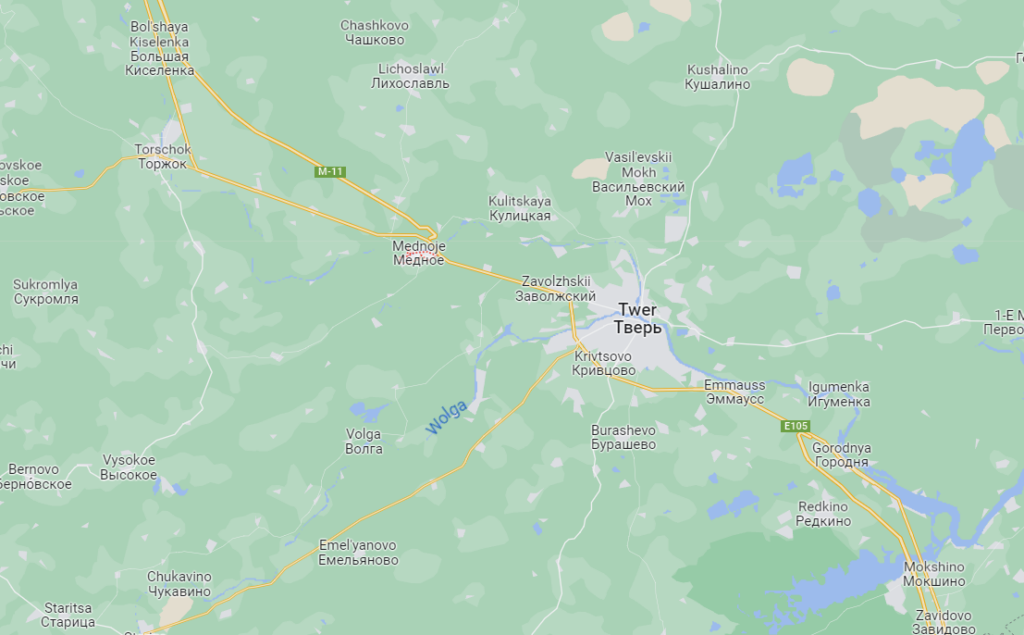Rusty Crosses on Bones
Everyone knows the word “Katyn”. Most will be able to explain that this is a place near Smolensk, where several thousand Polish prisoners of war were shot in 1940.
But few people know about Mednoye, although almost one and a half times more Polish prisoners of war were buried in the forest not far from the Russian city of Tver (Kalinin). Note that Tver is an old, historic town – but it was renamed to “Kalinin” from 1931 to 1990.
While the victims of repression, torture and murder by the NKWD are legion, in current Russia people make a great effort to deny historical facts and to blame others. How else can one understand the erection of a buste of Stalin at a sight where people were executed by the NKVD under his command? Sad thing, as we probably would all be better of if we could live in states where we can trust authorities to work in our service and protect us – and not to assail citizens because of quotas send by a dictator or other unfair reasons.

Both Russian and Polish victims of the NKWD were buried in the forest grounds there.

Such lack of awareness in public consciousness is explained very simply – the Katyn burial site was discovered by the Germans during the occupation in 1941. The discovered execution of captured Poles by the Soviets was amply used in the German propaganda. But the Germans did not reach Mednoye.
Information about the Mednovsky burial site was discovered only in the early nineties; construction of the memorial began in 1995; the Polish part of the memorial was opened only in September 2000.

The valiant NKVD officers chose a simply stunning place to bury the results of their labor activity – a pine forest, a hundred meters away – the Tvertsa River.

As I already said, in 1940, Polish prisoners of war were kept in the Ostashkov camp on the territory of the now operating Orthodox monastery – Nilova Pustyn. The executions were carried out in the spring of 1940 in the basement of the Kalinin NKVD (now the Tver Medical Academy is in this building), and the bodies of the Poles shot in Kalinin were transported by trucks to the forest near Mednoye at night.
In the post-war period, so that the burial would not be discovered, the NKVDShny dacha village was built in this place and the entire territory was surrounded by a fence. For almost a third of a century, high-ranking security officers came to relax with their families in the forest, hiding thousands of corpses under several meters of earth…
The memorial consists of two parts – Polish and Russian.

Entrance to the Polish part of the memorial. The Poles built this part themselves according to their own design and with their own money.

Almost the entire memorial is stylized as rusty iron. Perhaps the only exception is the entrance inscription built into the paving stones:


We pass through the gate


Ahead is something resembling a table, behind it is an iron wall with a bell at the base.


The iron wall, which from a distance appears uniformly rusty-smooth, upon closer inspection appears in a completely different quality.

The names of all the victims, apparently, are embossed in small letters on it.

There is a cross on the side – judging by the explanatory inscriptions at the base – it was laid at the beginning of the construction of the memorial.


Further, behind the iron wall, there is an ordinary pine forest, in which, at first glance, the following things are randomly installed:

These huge crosses made of rusty iron are installed on the site of discovered burial sites. There are many of them… I counted more than 20.

They stand silently between the trees, and from afar they look like these same trees. If it weren’t for the crossbars instead of crowns…

In the middle of this dead-living forest there is a small symbolic cemetery. The crosses on it are wooden, mostly birch, and have individual plaques.

Most likely, it appeared before the construction of the memorial as a result of the efforts of the first relatives of the victims who came to this place.

Many trees have such individual reminders nailed to them.

And around this entire palisade of crosses, a broken line of several hundred meters along the path stretches a strip of rusty iron tablets. Each tablet contains information about one person. Full name, date of birth, place of birth, most have military ranks. The date of death is the same for everyone – 1940.
All six-plus thousand victims, by name, from A to Z:


In six rows, continuous ribbon.





For example, there were 12 plates with the name “Kvyatkovsky”. 12 namesakes, 12 different destinies that ended the same way…

Above many of the signs there are lamps, artificial flowers, and photographs.


And only in the only case out of all thousands did caring descendants paste a photo onto the plaque itself


Transition to the Russian part of the memorial.


The Russian memorial is less interesting. The Russian memorial was built with Russian money, and the Polish one with Polish money. Russian money ran out very quickly, so there was only enough for a long path of cheap tiles with lanterns on the sides and a symbolic cobblestone with a marble cross and a laconic inscription:


There is also a board knocked together from boards with incomprehensible collages and the only valuable information:



Unfinished service center and hotel building. It has stood this way for over ten years.
